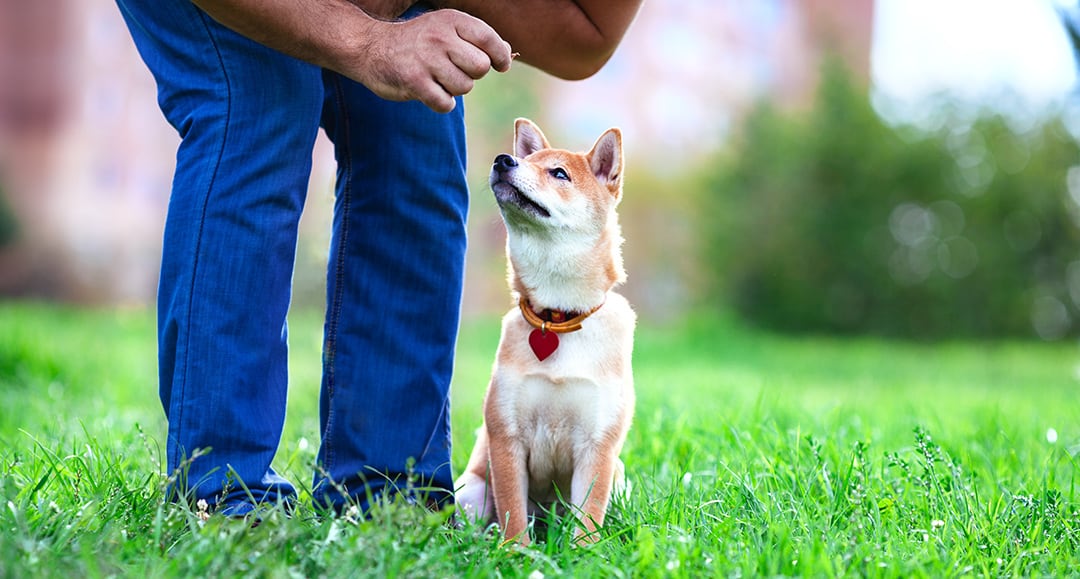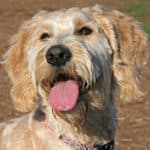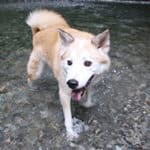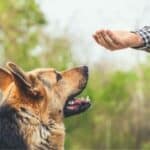As one of the oldest breeds in existence, Shiba Inus have certain personality traits that are thoroughly ingrained in their genetic makeup and are a throwback to ancient times.
Originally used in hunting small game, Shiba Inus were intentionally bred to be independent, courageous, agile, and intelligent. These traits allowed them to reliably and independently work well ahead of their handler in the field. It is these traits, once so valued for hunting purposes, that make the breed so unique and special today.
Are Shiba Inus easy to train? Not particularly. They can, in fact, be quite challenging, especially for inexperienced owners. They are known to be stubborn and strong-willed. Though not particularly eager to please their owners, with time, patience, and consistency, training can be achieved.
Training any dog requires dedication, patience, and consistency. While Shiba Inus can be more difficult to train than other breeds, learning about their temperament and training can make the process seem much less daunting.
On the bright side, potty training is often easy for a Shiba Inu! They like to be clean. We’ll get into all that and more, next.
A Shiba Inu’s General Temperament
Shiba Inus were bred to make their own decisions while hunting. That trait, coupled with an above-average intellect, makes for one smart but stubborn dog. Once a Shiba Inu has made up his mind about something, it can be very hard to convince him otherwise.
There is much more to a Shiba Inu’s personality than just his stubbornness and intelligence. This breed is known for being incredibly loyal, dignified, resourceful, generally good-natured, confident, and playful.
This breed is definitely not a lapdog. Most individuals are not overly affectionate or particularly eager to please their owners. A “What’s in it for me?” mentality is common in Shiba Inus and can present a unique set of difficulties when training.
As if all those traits weren’t enough, Shiba Inus are also famous for their cleverness, cunning ability to outsmart their owners, and skill at escaping a variety of confines.
The Difficult and Easy Parts of Training a Shiba Inu
Training any dog requires a good deal of time, plenty of consistency, and lots of patience. Shiba Inu owners quickly discover that this breed necessitates even more. While some aspects of training can be relatively easy to accomplish, others may prove to be much more challenging.
Because a desire to please is certainly not a priority for Shiba Inus and they are not often motivated by praise, owners often find it difficult to persuade their dog to obey. This breed’s tendency to think for themselves means that they frequently will only do what makes sense to them or what they feel like doing.
Shiba Inus are not afraid to push their own agenda, so they must be given a reason to want to do what you are requesting. Most tend to be more motivated by food than by praise or lots of hugs and kisses.
Using food to positively reinforce good behavior while ignoring bad behavior (yes, this is hard) is the most effective way to train a Shiba Inu. Work with a Shiba, not against him, or you’ll likely get stonewalled.
The fact is, unless your Shiba Inu clearly views you as the leader of his pack and you figure out what motivates him to want to obey, all aspects of training can be difficult. Really, the only typically easy part is housebreaking.
Shiba Inus usually treasure things like playtime and food. They also enjoy having all eyes on them. Using this knowledge against them can often make training easier.
If you are heading outside with a ball in hand and he refuses to come when called, then no playtime, even if he begs for it later. If he seeks attention through bad behavior, don’t give him any (this means no yelling or even looking at him as he will view that as attention).
Discovering what works and what does not with your particular dog will make all the difference during training. The key is to always be consistent and remain in charge.
Tips for Potty Training a Shiba Inu
Neat and Tidy: Shiba Inus have a natural desire to keep themselves and their homes clean, so housebreaking this breed is oftentimes quite easy. However, what goes in must come out, and a puppy’s little system just isn’t capable of holding it for very long.
A general rule to follow as far as how long a puppy can hold it between potty breaks is one hour for each month of age. So, the maximum time a 2-month-old pup can wait is 2 hours while a 4-month-old might be able to wait for 4 hours between breaks.
Stick to a Schedule: You’ll need to establish a routine early on and stick to it. It often helps to bring the puppy to the same spot outside each time so his scent will trigger the urge to go. Many owners also link a phrase like, “Do your business,” with potty time to help the pup get the idea.
In addition to the scheduled breaks, take your puppy out after each meal as well. Lavishly praise and reward him every time that he gets the job done in the proper location, and he should catch on quickly.
Sticking to a feeding schedule will help to establish routine elimination times. If you absolutely can’t be there to take him outside on time, place some puppy training pads down and teach him that for emergencies, it’s okay to make use of them.
Crate Train Option: Many owners choose to crate train their puppy. A dog, by nature, does not like to soil his sleeping area, so this method can be quite useful when housebreaking a dog. Just be sure to never use the crate as a means of forcing him to hold it for long periods solely for your convenience. That is simply not fair to the dog.
Top 5 Commands Your Shiba Inu Should Learn First
This very smart breed is capable of learning many different commands and even some tricks. However, there are some basics that should be mastered first before moving on to more difficult commands. Here is a quick look at five commands that should be thoroughly mastered and why each is important.
- SIT – This command is usually the first one to be taught and the easiest one to master. It is also the one you will likely use most often and is intricately involved in the teaching of other commands.
- DOWN – This one involves teaching the dog to lie down completely (many dogs try to cheat on this one) on command. The “down” position puts the dog in a more relaxed state than simply sitting and is useful for situations such as car rides and when teaching the dog to behave properly when the doorbell rings.
- STAY – The stay command is typically used in conjunction with “sit” and “down” and is useful when working on a dog’s impulse control. For example, reliably obeying “stay” can prevent your dog from dashing into the road when the neighbor’s cat steps outside.
- COME – Faithful obedience to this command could save your dog’s life one day. Also known as recall, this is admittedly the one which Shiba Inus tend to ignore when the mood strikes.
- NO – Although this command serves a wide variety of purposes, overuse is common and should be avoided. Save this one for when the dog is truly doing something bad or dangerous, like eating the remote.
Related Questions
Can Shiba Inus be walked off-leash?
In most cases, no. Due to the Shiba Inu’s primitive instincts, urge to roam, strong prey drive, and tendency to ignore commands, Shiba Inus should always remain on a leash for their own safety. Once free, they often take off, chasing after whatever caught their eye, sometimes never to return.
Does clicker training work well with Shiba Inus?
Yes. Clicker training can be very effective with Shibas. These smart dogs quickly learn to associate the distinct clicking sound with a forthcoming treat. Once the association is understood by the dog, the clicking sound is used to mark the precise instant of correct behavior and then a treat is given.





